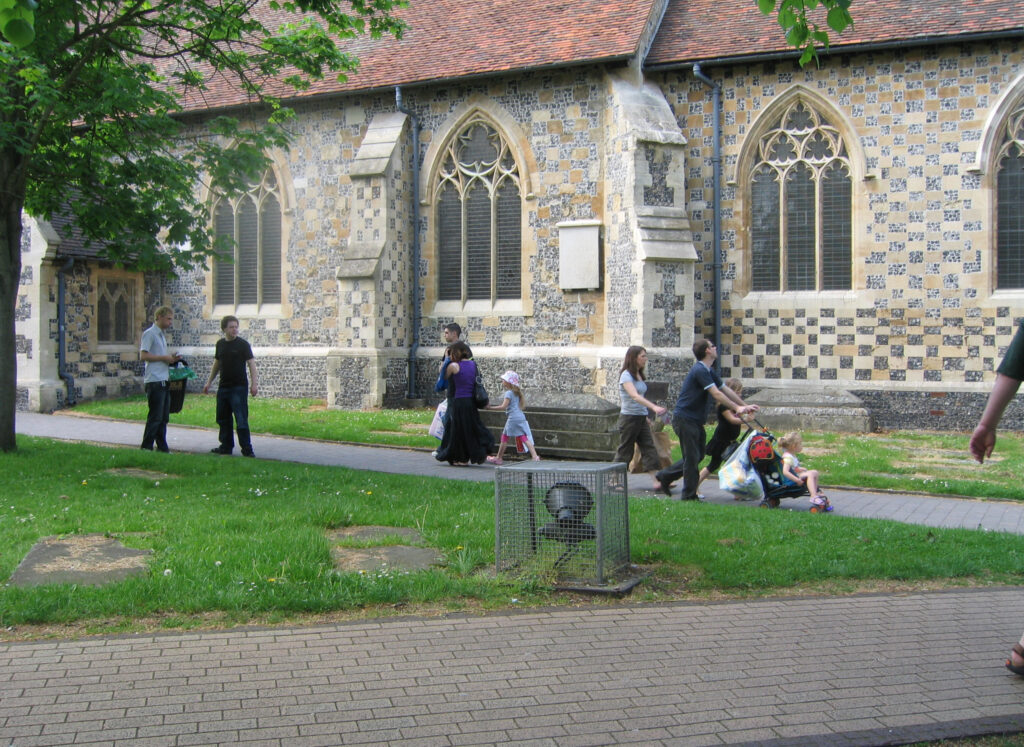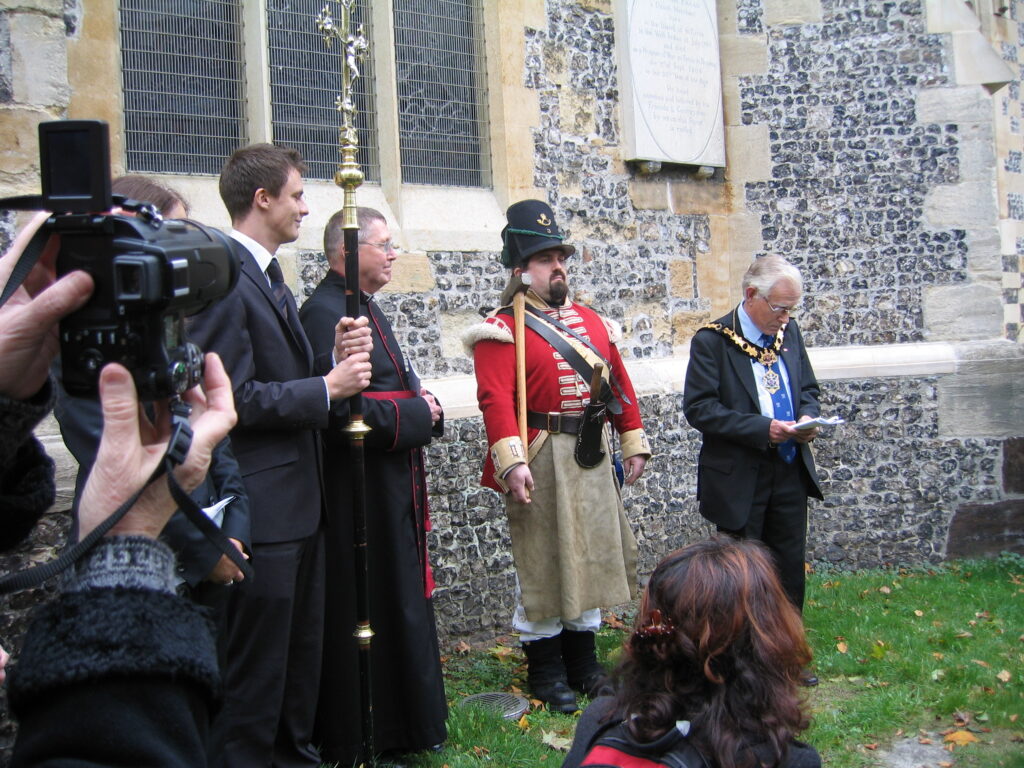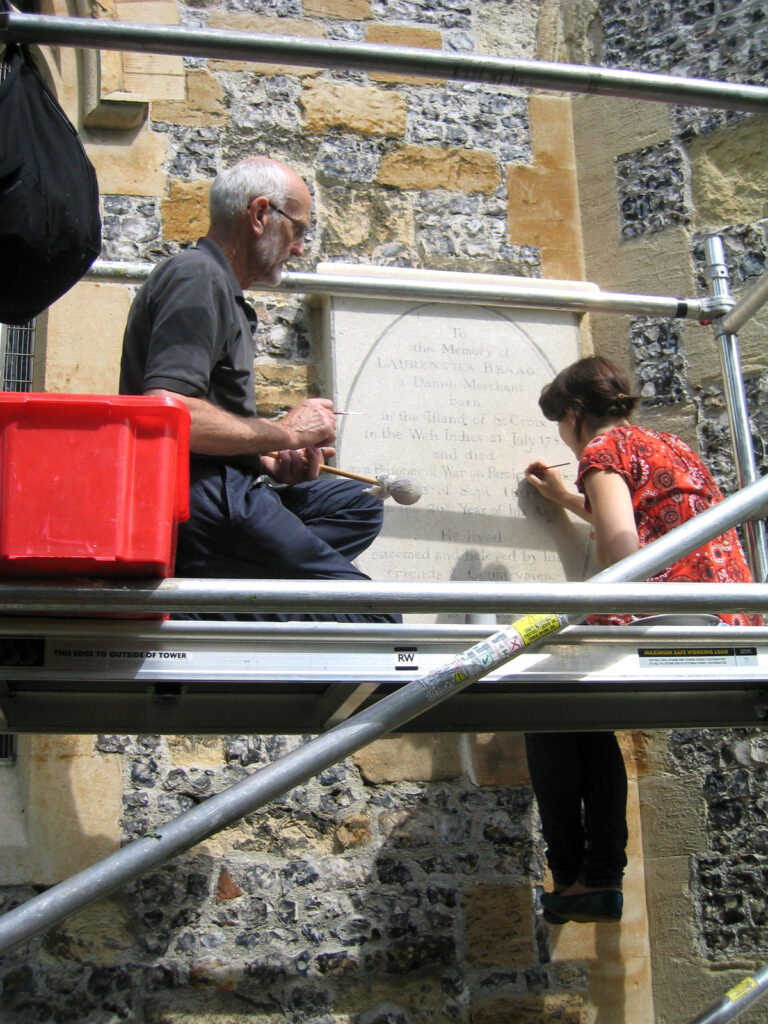Unveiling
The memorial stone is to Laurenthes (Laurentius) Braag, a Danish Prisoner of War from the Napoleonic Wars who died in Reading on 3 September 1808.
For seven years, at the beginning of the 19th Century, Reading was home to nearly 600 Danish and Norwegian prisoners of war. Nearly all were merchant seamen; skippers, first mates and ships’ boys.
In 2009 the text on the stone was restored with funds raised by members of Reading Civic Society.
On 29 October 2009 during a day full of events, and after a well-attended service in Reading Minster attended by many of Danish heritage who live in Reading and guests from Denmark, the stone was rededicated by Canon Brian Shenton, vicar of St Mary’s. In attendance were, the Lord Lieutenant of Berkshire, Mrs Mary Bayliss JP; Mayor of Reading, Cllr Fred Pugh; The Danish Defence Attaché, Captain Niels Erik Sørensen RDN, Royal Danish Embassy London; Councillor Tony Page, Reading Borough Council; Russell Vince, Principal Grand Master, The Oddfellows (which had supported the prisoners at the time) and Richard Bennett, Chair of Reading Civic Society.
A bit of background
So why did two friendly nations, linked by history and blood, become enemies? Napoleon Bonaparte.
The men and boys that came to Reading were the innocent victims caught up in a part of the Napoleonic Wars called ‘The Gunboat War’ (1807 – 1814). All were so-called ‘parole prisoners’, a privilege given to trusted prisoners of rank, which meant that they were not imprisoned, but instead lived in private lodgings that they had to pay rent for and engaged fully in life in the town. Many worked, many joined local Freemasonry and Oddfellows Lodges, some married local girls and, sadly, seven of them died.
Not much is known about Laurentius. However, the ledger that lists all the prisoners’ names, now kept at Kew, tells us that he was on board the merchant vessel Harriet, when it was seized and taken into Dover on 24 July 1807. Records in Copenhagen, Denmark, reveal he was born on the island of St. Croix, in the Danish West Indies, (now the US Virgin Islands), where his father was a high-ranking civil servant. It is highly likely that his ship was on its way back to Scandinavia with a cargo of sugar when it was seized, with the crew not even knowing that Great Britain and Denmark/Norway were in a state of war.
After almost four months in Dover, Laurentius and the Harriet’s skipper C M Dam and supercargo (a person responsible for the sale of the ship’s cargo), B J Møller, arrived in Reading along with thirty other countrymen on 23 November 1807.
Reading was one of 50 ‘parole towns’ dotted up and down the country. Most, of course, housed French prisoners. Danes and Norwegians were also housed at Ashburton and Moreton Hampstead in Devon, Northampton, and Peebles in Scotland.
Restoration work
The specialist restoration work was done by Michael Eastham and his assistant, Joscelyn Schmidt in August 2009, and cost £1,300.
A book by John Nixon called ‘The Gentlemen Danes’ (2021) tells the full story. It is available at Reading Central Library or for purchase at either the Reading Museum shop or at Fourbears Bookshop in Caversham.
Credit: John Nixon




